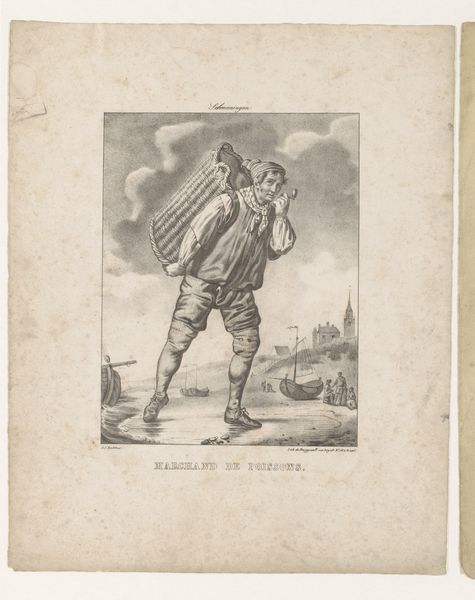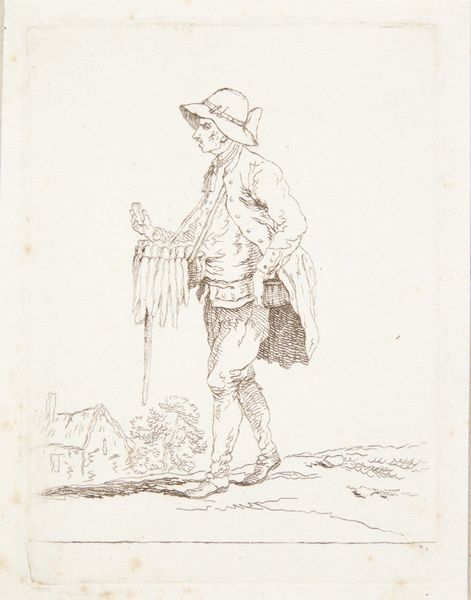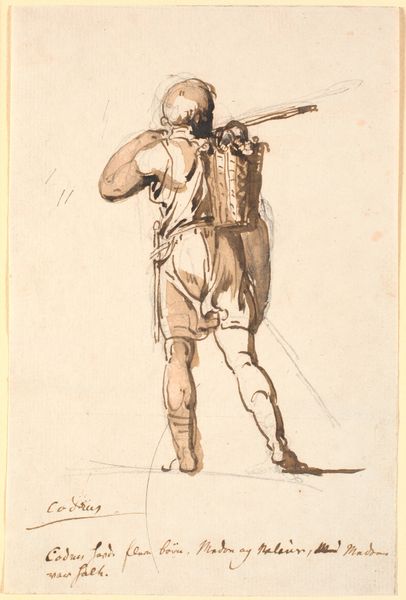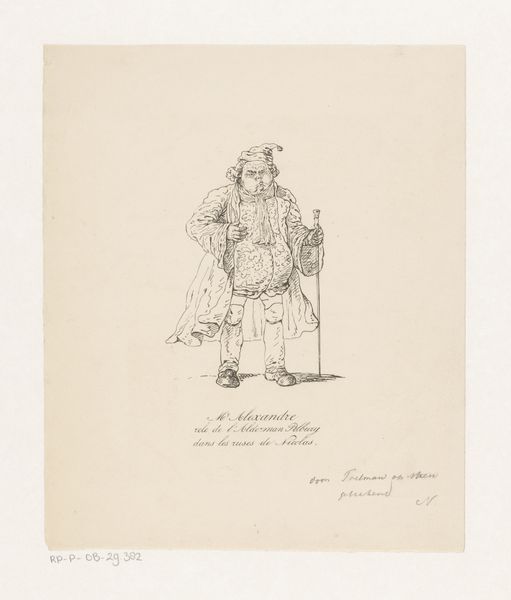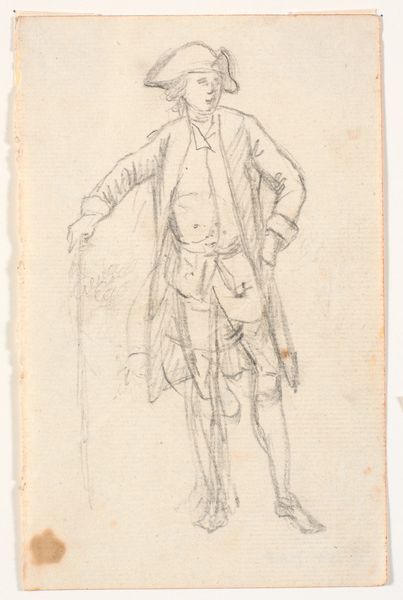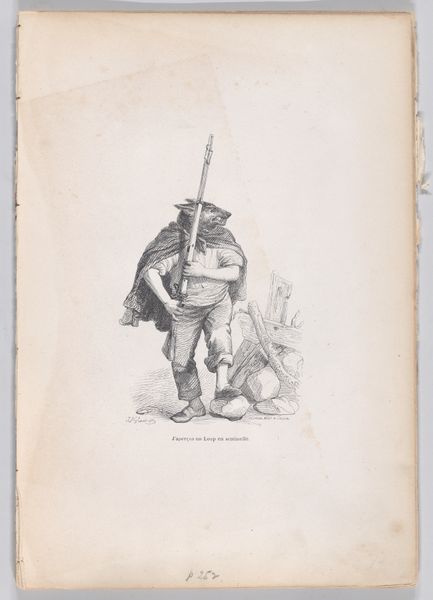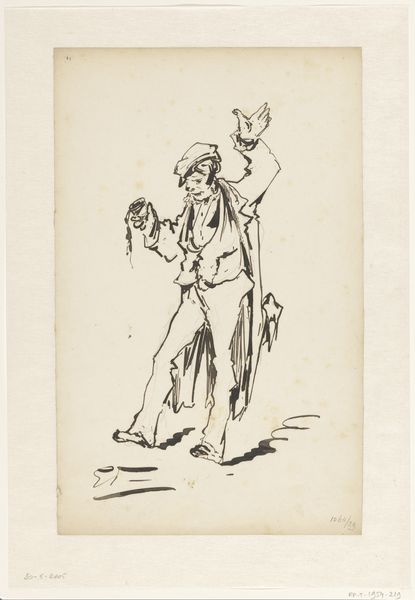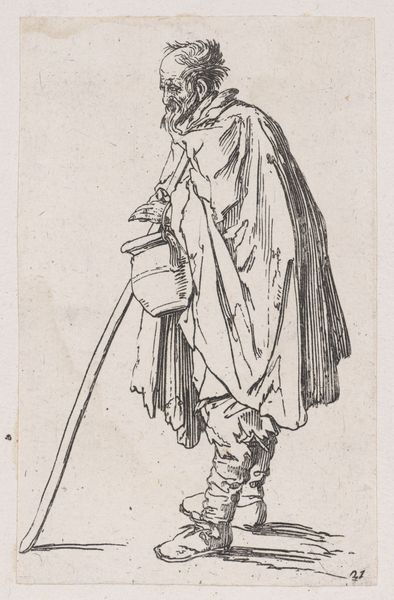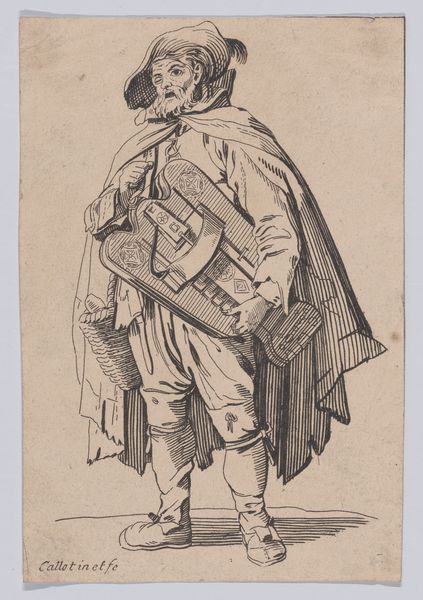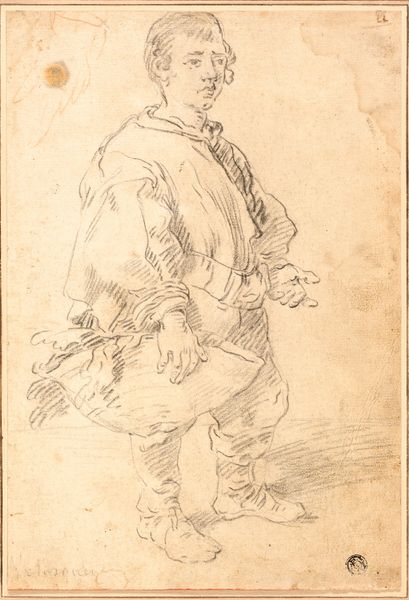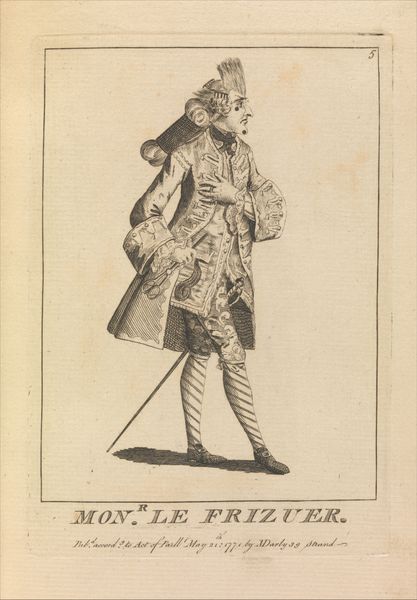
drawing
#
portrait
#
drawing
#
imaginative character sketch
#
neoclacissism
#
light pencil work
#
quirky sketch
#
personal sketchbook
#
idea generation sketch
#
ink drawing experimentation
#
pen-ink sketch
#
sketchbook drawing
#
storyboard and sketchbook work
#
academic-art
#
sketchbook art
Dimensions: 200 mm (height) x 170 mm (width) (bladmaal)
Editor: This is "Tordenskjold," a drawing created sometime between 1746 and 1828 by C.A. Lorentzen, currently housed at the SMK. It's just a sketch, but I find it compelling, like a quick glimpse into a historical figure's life. What jumps out at you when you look at it? Curator: What immediately grabs my attention is the context surrounding its creation and the figure it depicts. Tordenskjold was a celebrated Dano-Norwegian naval hero, right? So, why a quick sketch and not a grand, formal portrait? The fact that it’s a drawing suggests a more intimate or preparatory function, perhaps for a larger, more public work that would further solidify his heroic image. It is crucial to note that imagery related to heroes often have very specific roles in culture and social structure. Editor: So, it’s less about the individual Tordenskjold and more about the idea of him? Curator: Precisely! Think about how public figures are presented and consumed. Lorentzen wasn't just drawing a man; he was participating in the construction of a national symbol. And a pencil sketch makes that almost…unofficial, raw. Consider the cultural implications of depicting leadership this way versus, say, a full oil painting in military dress with all the symbolic accoutrements. This also brings me to my question for you: What type of Neoclassicism influences do you spot? Editor: I think I see the line work, a strong sense of classical composition and, if the final version were ever created, perhaps this sketch was planned in service of something larger and much more structured... almost propaganda! Curator: Indeed. It tells us something about the power of images and how artists were employed, or perhaps self-employed, in perpetuating or even questioning national narratives. Editor: I hadn't considered the purpose behind its creation as deeply, only its face value! Thanks! Curator: My pleasure. Remember, context transforms what we think we see, especially in portraits of historical importance.
Comments
No comments
Be the first to comment and join the conversation on the ultimate creative platform.
